-
Welcome to AG Paving Specialists!
Is your outdoor home missing the last touch to make it look perfect? Why not set up some paving? Paving permits you to separate and surround your garden, and with a number of styles, there’s something to fit every home. If you are looking for a high quality paving specialist Northampton, you can’t pass by AG Paving.
We have actually been running as an effective paving company Northampton for many years. Our experience has actually allowed us to produce a valuable client base, and our personnel know exactly how to produce the very best outcomes. Our company works closely with our customers to develop exactly what they desire, so we can then provide the perfect outcome. We believe that our attention to our craftsmanship and our customer care is what separates us from the rest, and makes us one of the very best paving specialists Northampton.
Expense of Laying a Patio area
Searching for out just how much it costs to lay a patio area? In this article we offer a breakdown of the rates for different patio materials and the expense of employing a patio area setup professional to carry out the work.
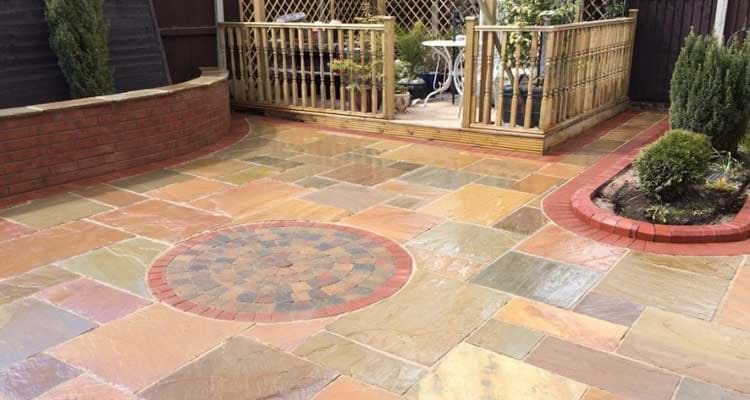
AVERAGE COST TO SUPPLY & LAY A PATIO:
Depending on the intricacy of the task, it usually takes: 2 days
₤ 1200
How Much Does It Cost to Lay an Outdoor patio?
The typical expense of laying a patio in a 20 square metre area is typically around ₤ 900 to ₤ 2,500. This cost includes the cost to excavate the location, lay the foundations, purchasing the patio area pieces and laying them. These costs will differ depending upon the type of products used, for instance, budget alternatives such as concrete and brick outdoor patio slabs tend to start at ₤ 15 per square metre, while premium outdoor patios are generally made up of slate which varies from ₤ 900 to ₤ 3,800 for installation, while a stone patio area can cost up to ₤ 4,600.
Outdoor patio Prices
Below are some approximated costs of working with a landscape gardener to construct a small (10M ²), medium (20M ²) or big ( 40M ²) patio area.
PATIO TYPE PATIO SIZE AVG. COST Stone Small £800 – £1,350 Medium £1,400 – £2,500 Large £2,400 – £4,600 Brick Small £550 – £900 Medium £900 – £1,400 Large £1,400 – £1,800 Slate Small £900 – £1,200 Medium £1,600 – £2,200 Large £2,800 – £3,800 Concrete Small £550 – £1,100 Medium £900 – £2,000 Large £1,400 – £3,600 Patio Type Patio Size Avg. Cost Supply Just Expenses.
If you intend on setting up a garden patio area yourself, take a look at the following supply only expense of laying a patio area per square metre:
Patio Type Avg. Cost per M² Stone £40 – £95 Brick £15 – £50 Slate £50 – £80 Concrete £15 – £70 Sub-base £3 to £45 per bag Sand £4 to £55 per bag Cement £4 to £12 per bag Extra Expenses
There are various other costs you require to consider when having your patio set up. The listed below table sets out the extra cost of laying outdoor patio that you might wish to think about in your budget plan:.
Description Avg. Cost Weed membrane £3 to £90 Outside lighting £3 to £250 Outside heating £30 to £480 Outside furniture £50 to £2640 Labour Costs and Time Scales.
The expense to work with a landscape gardener to install your outdoor patio is normally around ₤ 100 each day, although they will typically work with a general labourer bringing the everyday expense as much as around ₤ 200.
A normal installation for a little patio determining 10 square metres would take around 2 days to complete and would cost around ₤ 400 for labour. While a 20 square metre patio area would take around 3 days and would cost about ₤ 600 for 2 tradesmen to complete the job.
What’s Involved in Laying a Patio area?
Precisely how much work is even involved in laying a patio? Well, it is among the bigger landscape gardening tasks, even for a fairly little outdoor patio location of 25 square metres.
To begin, the location will initially need to be prepped. The existing pavement will require to be raised if upgrading your existing patio area. The tradespersons will then dig a hole of a minimum of 150mm in-depth, followed by laying a hard-core base of 100mm and top off with 30mm of sand or grit.
The next action includes creating the concrete, which consists of one-part cement and three parts sand. This will be utilized to bed pieces into the base while making sure there is an even layer of 40mm.

When the structures remain in location, the outdoor patio material can then be set up. This involves dampening the pieces or blocks to prevent the concrete from drying out. The very first piece will be secured in place by tapping it with a rubber mallet. The rest of the outdoor patio will then be set up, making certain every slab has a 10-15mm gap in between each one. The patio will then be sprayed with water and after that delegated set for around 24 hours.
When 24 hours is up, the blocks or slabs will be grouted and jointed utilizing a trowel to fill the spaces between the paving. The surface will then be wiped down to eliminate any residue.
Cost Affecting Factors of Laying a Patio.
When preparing a patio installation, there are a variety of expense elements you require to consider. The very first being the size of your patio area, as the bigger the location is, the more expensive it will. For example, a little patio of around 10 square metres can range from ₤ 800 to ₤ 1,100, while a large 40 square metre outdoor patio can cost up to ₤ 4,600.
With regard to the paving pieces you purchase for patios, you get what you pay for. It is the cost of laying a concrete outdoor patio begins at around ₤ 15 per square metre for budget plan garden paving, however generally, the quality is usually extremely bad.
Poor quality slabs generally have lots of air bubbles in them, and when water enters into these air pockets and freezes, the ice expands and forms tiny little fractures, which in turn fill with water and this procedure continues until the paving stone literally falls to pieces!
In general, higher-quality slabs such as stone are more costly and cost as much as ₤ 95 per square metre. They will have fewer air bubbles in them and will last a lot longer while looking a lot much better.
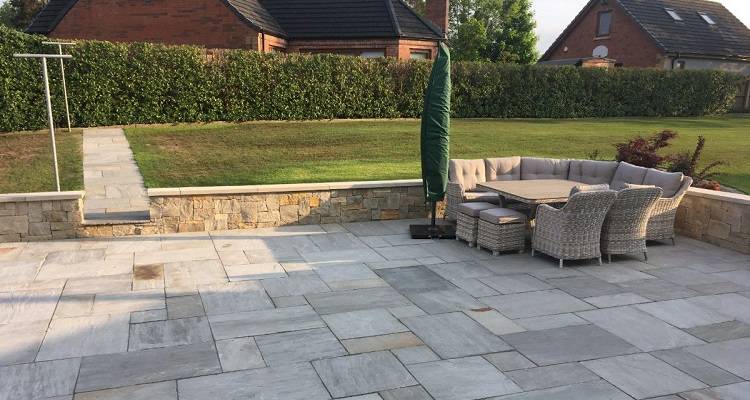
Labour costs will also differ, depending upon your location and whether you choose a business or one or two tradesmen. For example, in London and southern areas, you can expect to pay around ₤ 2,400 to ₤ 2,600 for a large business, while larger companies in the north tend to charge about ₤ 2,000 to ₤ 2,200. Many people tend to pick sole traders who have a typical rate of ₤ 2,000 in London or ₤ 1,750 in the external areas.
Another enormous factor that might impact your patio laying expense is the amount of excavation required, together with the requirement for a new sub-base. If you need flagging, this can cost around ₤ 15 to ₤ 60 per square metre for the flagging product, in addition to an extra ₤ 75 to ₤ 100 per square metre for labour.
A hard-core bed is not typically required for a patio unless the ground is very moist and boggy, or the outdoor patio will likewise be utilized for lorry parking. Patios are constructed with a small fall that lets any surface area water recede.
However in some cases, it may not be enough simply to let the water drain onto a lawn, specifically if you have a big paved surface. In these cases, you may need to construct a drain channel to direct the surface water to an existing surface water drain or into a soakaway. The average expense of installing a soakaway usually varies from ₤ 700 to ₤ 1,000.
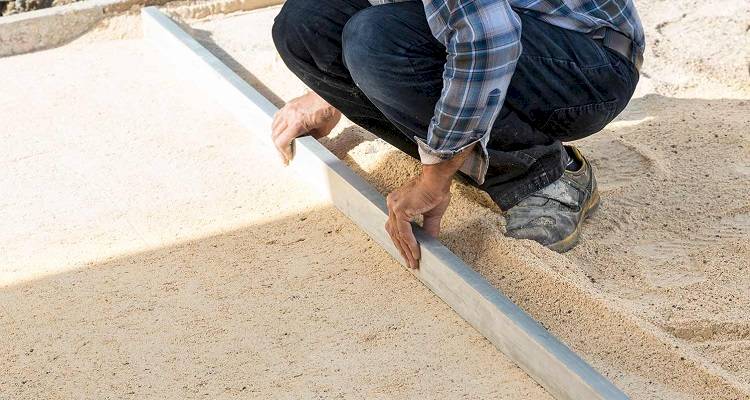
Which usually includes on around ₤ 100 to the last price if eliminating an existing patio then you may have to pay for waste disposal expenses. If you are preparing the area yourself, then you may have to pay for skip hire which can vary from ₤ 60 to ₤ 400, depending on the size avoid you require.
How to Lay a Patio area.
You might desire to set up an outdoor patio yourself if you have a little budget in mind. However, this is generally just advised for experienced DIYers, as it is a labour-intensive task. If you have experience and know-how to lay an outdoor patio, you must be fine.
If you have no experience, then it may be best to hire a professional, as this will actually help you save money in the long run, as a expert and top quality installation will suggest your patio will last a lot longer. You will likewise avoid any expensive issues, such as sinking and breaking, which may occur if the foundations are not installed correctly.
If you do choose to set up an outdoor patio yourself, then you will need to think about the product expenses, as well as any tools and security devices you need.
The listed below table sets out the expenses of purchasing or working with tools for a patio installation:
Tools Avg. Cost Cement mixer £100 to £4,000 / £15 for daily hire Pegs £3 to £5 per pack Trowel £4 to £65 Rake £16 to £45 Wheelbarrow £35 to £170/£8 to £10 for daily hire Tape measure £2 to £50 Spirit level £4 to £160 Rubber mallet £5 to £10 Here is a cost breakdown of the various safety devices:.
Safety Equipment Avg. Cost Dusk mask £1 to £20 Safety goggles £0.50 to £30 Rigger gloves £2 to £10 Knee pads £2 to £50 Ear defenders £2 to £40 Steel toe-capped boots £15 to £130 Types of Patio Area Available
The kind of patio area you pick will actually depend upon your own individual preferences in addition to your budget. Here is a breakdown of the different outdoor patio types, that includes advantages and disadvantages, in addition to the average costs.
Patio type Pros Cons Cost per M² Brick -Resistant against scratching and warping. -Low-maintenance patio product.
-Easy to fix.-Brick paving can be tough to install. -Prone to frost heaving.
£15-£50 Concrete -Uses substantial wet prevention
-Concrete pieces are simple to move and replace.
-Can endure extreme weather modifications.-Style flexibility is limited due to its stiff shape.
-Pigments do tend to fade with time.
-Not suitable for installation over plumbing or electricals.£15-£70 Slate -Does not fade as quickly as stone.
-They have a low-absorption rate.
-Offers a special design aesthetic-Susceptible to scratches. – Prone to puddling or freezing in chillier months.
– Layers of slate can flake off during bad weather. ₤ 50- ₤ 80.£50-£80 Stone -Can hold its colour well.
-Stone is flexible.
-The most long lasting choice.-Surfaces can be irregular.
– They are prone to weed growth.
-One of the most expensive options.£40-£95 Building Regulations and Planning Approval.
Planning approval is not normally needed to replace an outdoor patio or build; nevertheless, if you are planning to set up embanking or a terraced construction to support a tough surface, then you will require to use through the preparation portal, which must cost around ₤ 206.
You will also not require building policies approval unless there is a substantial modification to the availability of the residential or commercial property. For example, if you want to set up steps or drop a kerb, then you may need to pay to look for a structure notice. The fee for this will differ depending on your regional authority.
Outdoor Patio Repair Expenses.
The average expense of fixing a patio area tends to be significantly lower than the expense of replacing one. This will depend considerably on the scale of repair work needed. Patio repairs are generally finished within one day, so you should anticipate to pay around ₤ 100 for expert repairs or approximately ₤ 200 per day If a basic labourer is working together with them.
Sinking
If you see that some of your patio pieces appear sunken, they will need to be eliminated utilizing a screwdriver (₤ 1 to ₤ 20). A screed pipeline will then require to be built utilizing a screed board (₤ 20 to ₤ 30 per M ²). This must be long enough to rest on the level pavers while ensuring there is a notch at one end that is 1/8 of an inch less than the depth of the pieces.
As soon as the screed pipeline is in location, the area ought to be completed with sand and screed (₤ 12 to ₤ 30 per bag) utilizing a trowel to level it out and get rid of any excess product. The area ought to then be cleared prior to putting the pavers back in place, making certain they are flush with the rest of the patio area. To round off, dry sand will be added on top of the pavers, before sweeping and tamping until all joints are filled.
Splitting
If you have had your outdoor patio for a very long time, you might start to discover little fractures appearing on the surface. These can be fixed by applying cement and sand to the location to fill in the spaces and covering the fractures.
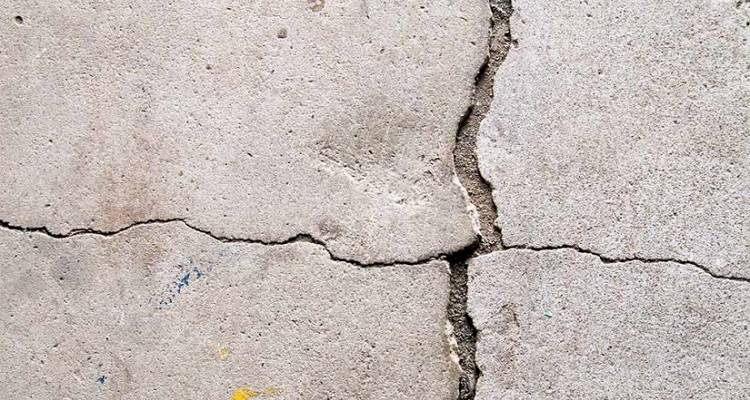
If you have a concrete patio with a hairline crack, then the damage can be chipped away utilizing a sculpt (₤ 4 to ₤ 25) and a club hammer (₤ 6 to ₤ 30). The removal must reach a depth of at least 15mm. When this is total, the area must be cleaned of all dust and debris, then PVA adhesive (₤ 4 to ₤ 20) ought to be diluted and applied to the hole.
After the glue ends up being ugly, repair filler (₤ 6 to ₤ 30 per bag) need to then be added to the location. To guarantee whatever is level, a float ought to be utilized. The final step is to cover the hole with a polythene sheet (₤ 6 to ₤ 20), which need to be left for 3 days to allow it to harden.
Re-jointing
To do this, the existing mortar will require to be eliminated with a connected tool (₤ 2 to ₤ 10) or weeding knife (₤ 1 to ₤ 30). In some cases, the mortar might be quite tough to eliminate, so a diamond blade (₤ 6 to ₤ 60) will be needed which should be attached to a cut-off saw (₤ 100 to ₤ 800).
When all the old mortar has been gotten rid of, the location will need to be cleaned up completely, ensuring that any dust or particles is removed using a pressure or a brush washer, which costs around ₤ 70 to ₤ 2000 to ₤ or buy 20 to ₤ 160 daily to work with.
After the area has actually been cleaned up, brand-new mortar can be applied to the gaps. The best sand and cement will be applied to each space, with the ratio of materials depending on the size of the spaces. For example, if spaces are less than 13mm, silver sand (₤ 3 to ₤ 5 per bag) need to be used, while sharp sand (₤ 3 to ₤ 40 per bag) should be utilized for gaps larger than 13mm. This ought to be blended first prior to spreading it on the patio, making sure that all the joints are filled.
As soon as the joints are completely full, a brush needs to be utilized to get rid of any excess sand off the patio area surface area. The jointing product will then harden, and your outdoor patio will look brand new once again.
Alternatives to Patio.
If you already have a patio and are searching for an alternative path, you could think about one of the following alternatives:.
Gravel
A gravel path is made up of any loose stone or rock that is smaller sized than cobble but larger than sand with a size of around 1/10 inch to 2.5 inches. This kind of path tends to cost around ₤ 20 to ₤ 50 per square metre, although the rate will vary depending upon the condition and size of your current path.
Gravel is one of the most versatile materials due to the different styles and colours available. They are likewise among the simplest pathways to set up, as it just involves laying a sub-base product then spreading gravel throughout the location then levelled out. If looked after correctly, it is likewise one of the most long lasting choices and can last up to 100 years.
One of the drawbacks of a gravel course is that it needs routine cleansing to maintain its aesthetic. It is also much more difficult to clean up in freezing temperature level when there is snowfall, as unlike a patio area, you can not scrape the surface area, as this will remove the gravel.
Bark Mulch
If you are looking for a basic path solution, then bark mulch is ideal, as it just involves setting wood chippings on your path. You can either utilize extra wood that you have lying around or acquire a bulk bag which will cost around ₤ 90 to ₤ 180 per bag.
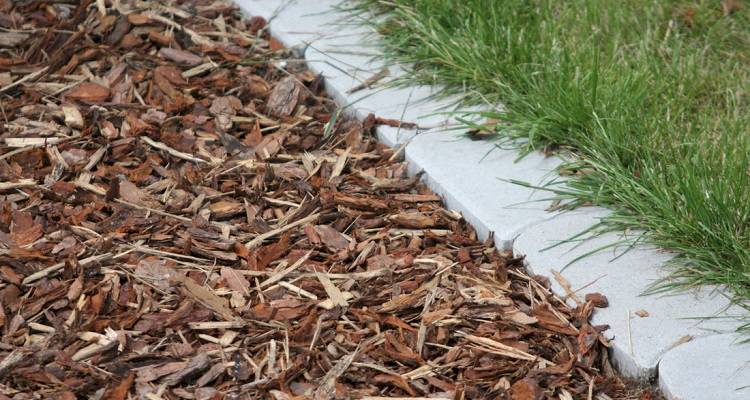
The main benefit of a bark mulch course is that it prevents weeds development and also improves soil fertilisation. It is likewise extremely simple to repair, as it simply just needs a top-up of wood chippings if you discover any spaces.
This is not a perfect material for high tramp areas, as bark mulch shifts easily, so you will wind up with a substantial quantity of mess. You will also need to prevent utilizing a leaf blower or any other pressurised garden equipment which could trigger the mulch to move.
Wood Decking.
Decking is one of the most popular additions to garden home furnishings and tends to cost around ₤ 15 to ₤ 90 per square metre. This kind of floor covering is available in a variety of materials including softwoods such as spruce and pine, as well as wood options like IPE and oak.
It likewise assists to develop a sense of heat in the garden, which is improved when adding garden home furnishings such as outdoor patio sets. Wood decking is also a versatile product which enables for flexible styles that fit both little and large gardens.
When selecting decking, you need to be cautious with less expensive decking options, as they tend to last just 10 to 15 years. It can, of course, last longer if it is maintained properly, although this requires a substantial quantity of effort in order to avoid rot and other types of damage. This can be time-consuming and costly, particularly if you require replacement panels.
Resin
A resin-bound course is comprised of a mixture of resin and different aggregate materials which are integrated together to create robust outside floor covering. This tends to cost around ₤ 60 to ₤ 90 per square metre.
Another advantage of installing a resin bound path is its flood avoidance qualities, as the material is able to absorb water and filter it through the ground.
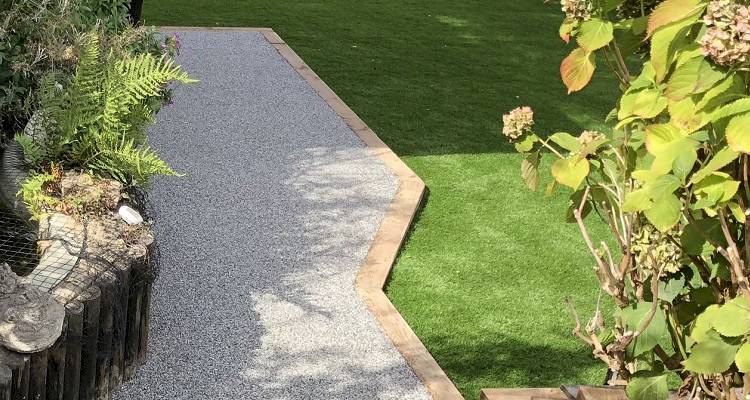
While a high level of absorption can be a good idea, It can also increase weed growth, which means a resin bound driveway will require to be preserved frequently to prevent slippery surface areas.
Another alternative is a resin bonded surface area which includes aggregate product which is laid on top of a resin layer, which offers the very same appearance of a gravel course without the level of maintenance. In contrast to a resin bound surface, this kind of path is not permeable and does not take in liquid well, which can lead to water pooling.
What Time of the Year is Best for Laying Patio Area?
You can get your patio area installed whenever; nevertheless, installation throughout the rainy season can be challenging, as rainfall might affect the curing procedure. It can also be harder in warmer climates, as it is very important that the mortar does moist out too rapidly before the paving is set up, so spring might be your best option.
If you are having your patio set up in the winter, expert’s will cover the installation with a polyethene sheet to safeguard the mortar versus frost or rain throughout the drying process. If the temperature level is under 2 degree, they might also recommend versus setup.
Patio Maintenance and Cleaning.
To guarantee your patio area lasts, you should carry out routine cleansing and maintenance. There are different methods for each material, including:.
Stone Outdoor patio
Stone is sometimes prone to mildew and algae growth. To get rid of dirt, you can merely use dish soap and water, which can be applied utilizing a brush, although avoid a wire brush as this can scratch the surface. You can likewise use vinegar or oxygenated bleach for persistent dirt. For spots, you can use a deck cleaner or a degreaser which should be rubbed onto the stone with a nylon brush then rinsed with water.
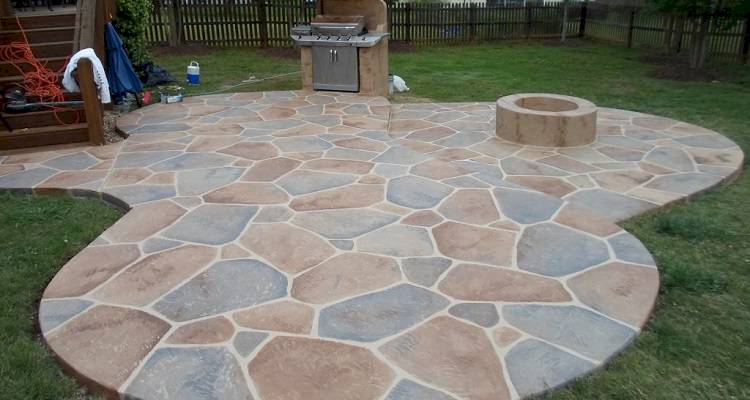
To preserve your stone outdoor patio, you should brush it to get rid of any particles and pull out any weeds at least as soon as a week. You can likewise put sand in between your stones to prevent weed development. Experts will likewise advise you to cover your patio with a surface protector in the winter to prevent moss and dirt accumulation.
If you would prefer to work with a professional to tidy and preserve your stone patio, then you need to expect to pay around ₤ 150 to ₤ 400 for jet cleaning, although the cost will differ depending upon the size of your patio area.
Slate Patio area.
You will need to clear any dust or dirt routinely by utilizing a brush and meal soap if you have a slate patio. You must try to prevent using severe chemicals on a slate patio, as it is a natural material that is easily damaged by utilizing specific detergents. You will likewise need to perform thorough cleansing around 2 to 3 times a year.
If you have any discolorations on your outdoor patio, then you need to apply a slate cleaner mixed with water and leave it on the location for ten minutes, then wash it off with a hose pipe. The stain can then be scrubbed with a stiff brush.
Routine polishing is also crucial with a slate surface area, although make sure you eliminate any dust or debris. You might utilize an industrial flooring cleaner, which will cost around ₤ 500 to ₤ 700 to purchase or hire one for ₤ 30 to ₤ 80 a day. For a clean polish, you need to also rub the slate by moistening the patio area, then utilize a wet abrasive to rub over scratches, then rinse the floor with water and repeat the buffing process.
Concrete Outdoor patio.
When cleansing and maintaining your concrete pathway, you require to be careful about harming the surrounding grass and plants. Some routine approaches include brushing any leaves or particles off the pathway with a brush or leaf blower, which costs around ₤ 30 to ₤ 90.
To get rid of any dirt or gunk, you need to wash the course routinely with a garden pipe that has a nozzle with concentrated water circulation. You must direct the hose pipe at the course rather than the turf to prevent water pooling.
For stubborn spots, you would hire somebody to power clean your path, or you can do it yourself if you have the devices. For any staying stains, you should rub the area with a stiff scrub brush and use a small amount of cleaning agent, then as soon as removed you should rinse your patio area with water.
Brick Patio area.
For regular brick outdoor patio maintenance, you ought to sweep the location a minimum of as soon as a week, making certain you use a brush with stiff bristles. You ought to also hose it routinely, as this will remove any brick particles and grout which might have come loose.
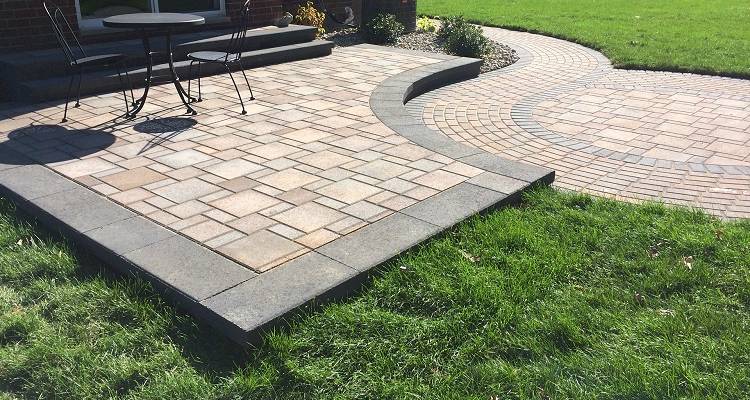
Regular weeding is also crucial if you have a brick outdoor patio, as weeds that are left can eventually cover the brick entirely, so you’re best removing them as soon as possible. This will involve eliminating the weed itself, as well as any leaves, branches and dirt.
For simple maintenance, you might want to include a sealant to your brickwork which costs around ₤ 3 to ₤ 6 per square metre for sealing, although this will differ depending on the size of your outdoor patio. You may likewise wish to pay additional for power washing, which ought to be carried out 2 or 3 times a year.
Cost of Removing a Patio.
If you wish to remove an old patio initially prior to laying a brand-new patio area, then you will require to think about the cost of the additional labour and garbage disposal expenses, which is typically around ₤ 100 to ₤ 200 each day. The expense of having a tradesperson eliminate your old patio area will vary depending on the size of the outdoor patio and the type of material you’ve chosen. If it’s a concrete patio, then it will take some major labour to break it up and remove it all, whereas if it’s paving pieces, then it’s a much quicker job.
If getting rid of the outdoor patio yourself, you will need to work with an avoid which will vary from ₤ 60 to ₤ 400, depending upon the size you require in addition to the expense of an avoid. Eliminating an old patio is a relatively easy task that can be done yourself, simply remember to follow finest practises when raising heavy slabs. If the mortar is relatively brand-new, you will also require a chisel and hammer to remove the slabs or a diamond blade.
These costs will differ depending on the type of products utilized, for example, budget plan alternatives such as concrete and brick patio slabs tend to begin at ₤ 15 per square metre, while premium outdoor patios are generally made up of slate which ranges from ₤ 900 to ₤ 3,800 for setup, while a stone outdoor patio can cost up to ₤ 4,600.
In London and southern areas, you can anticipate to pay around ₤ 2,400 to ₤ 2,600 for a big business, while bigger companies in the north tend to charge about ₤ 2,000 to ₤ 2,200. To do this, the existing mortar will require to be gotten rid of with a hooked tool (₤ 2 to ₤ 10) or weeding knife (₤ 1 to ₤ 30). If spaces are less than 13mm, silver sand (₤ 3 to ₤ 5 per bag) ought to be used, while sharp sand (₤ 3 to ₤ 40 per bag) need to be used for spaces bigger than 13mm. You could use a commercial floor cleaner, which will cost around ₤ 500 to ₤ 700 to hire or buy one for ₤ 30 to ₤ 80 a day.
How to Find & Employ a Patio Installer
The expense to hire a patio area installer Is normally around ₤ 100 each day, although this expense will increase to ₤ 200 a day if 2 tradesmen deal with the task together.
✔ When employing somebody for the job, you should get a number of quotes, while also inquiring about their experience, as ideally, you ought to hire a tradesman with at least 5 years’ experience in setting up patios.
✔”You might request for pictures of previous tasks to see if the quality of their work.
✔”Prior to agreeing or signing an agreement, you should inspect that the tradesmen you choose are totally guaranteed in order to safeguard them, and you should any damage happen.Frequently asked questions
Do I need planning consent for a patio area?
near, ground level around your house, with the exception of paving over your front garden, as long as the total location disappears than 5 metres or the tough surface area is made of porous materials. You can even develop bigger patio area areas or driveways using non-porous products as long as the drain issues are resolved. Nevertheless, if any embanking or terracing works are required to support the patio area that might well require a planning application.
Obviously, if you reside in a listed building, then you will need listed building authorization for nearly any works, whether internal or external, including a patio area. However keep in mind that if you mean to offer any electrical lighting to the outdoor patio location, then a Building Regulations application is required for the electrical work under Part P guidelines. When it comes to any preparation authorization or structure policy problems, if in any doubt, always talk to the pertinent authorities. In fact, even if you make sure there are no consents or applications required, simply inspect anyway, it costs nothing and can save a great deal of potential troubles.
Just how much would it cost to have a little patio area laid?
For a patio measuring around 10 metres squared, you should expect to pay anywhere from ₤ 550 to ₤ 1,100 for brick or concrete slabs. Premium options tend to vary from ₤ 900 to ₤ 1,200 for slate or ₤ 800 to ₤ 1,350 for a stone outdoor patio.
What sand to use when laying outdoor patio slabs?
The sand you need will depend upon the density of the joints between your slabs. For instance, if your joints are more than 13mm, you will require silver sand which will be installed in between your pieces. While pieces with less than 13mm ought to be filled with sharp sand.
Which patio area cleaner can I use?
The cleaner you utilize on your outdoor patio will depend on the material you have. For instance, a brick or concrete patio area can be cleaned up with an expert cement cleaner, or you can just utilize a pipe and brush to eliminate any stains, weeds or dirt. For a stone or slate patio area, you might want to buy a stone-friendly cleaner, or you could use a mild cleaning agent or vinegar to clean any persistent discolorations from the surface.
Can patio pieces be used for a driveway?
You can use patio area pieces for your driveway; however, you need to ensure that the slabs you utilize have a thickness of at least 50mm, as the product will require to hold the weight of one or more lorries.
For paving slabs, you will likewise need to make certain the sub-base is strong to make sure that your paving product is fitted appropriately and is also long lasting. Your sub-base will need to be at least 100mm, although 150mm is the common requirement.Can patio slabs be painted?
It is possible to paint patio area materials such as concrete, which will cheer up the drab aesthetic. To do this, you need to ensure that the patio is totally clear and clean. The wetness level will also require to be evaluated prior to paint is applied.
This will include taping a square of thick plastic on among the slabs, then wait on 16 to 24 hours prior to checking for condensation. If the area is still damp, then you need to wait up until the weather is clear prior to painting your pieces with a guide and a concrete paint that contains a sealant that will safeguard against grease, water and oil damage.
You can even construct larger outdoor patio areas or driveways utilizing non-porous products as long as the drainage problems are dealt with. If any embanking or terracing works are required to support the patio that may well require a planning application.
Obviously, if you live in a noted building, then you will need listed building permission for almost any works, whether internal or external, including an outdoor patio. The cleaner you use on your outdoor patio will depend on the material you have. To do this, you require to make sure that the patio is totally clear and clean.
Learn More About Patios From WikiPedia
A patio (, from Spanish: patio [ˈpatjo]; “courtyard”, “forecourt”, “yard”) is an outdoor space generally used for dining or recreation that adjoins a domicile and is typically paved. In Australia the term is expanded to enlarge roofed structures such as a veranda, which provides protection from sun and rain.
AgPaving Office Location
AgPaving Services
Related Links
- Is a patio area in front or back?
- Is a patio area and veranda the same thing?
- The Best Outdoor Flooring Options – 2021
- Just how much does it cost to lay a patio?
- What is a patio? – 2021
- What is an outdoor patio?
Around the Web
- https://www.planningportal.co.uk/info/200130/common_projects/44/patio_and_driveway/2
- https://www.marshalls.co.uk/gardens-and-driveways/blog/how-to-lay-a-patio
- https://www.barbourproductsearch.info/pros-and-cons-of-timber-decking-blog000470.html
- https://www.bhg.com/home-improvement/outdoor/walkways/wood-chip-path/
- https://www.thespruce.com/pros-and-cons-of-gravel-driveway-1398078
- https://www.mainlandaggregates.co.uk/gravel-driveway-construction-guide
- https://www.pavingsuperstore.co.uk/blog/how-to-repair-your-paving/
0/5 (0 Reviews)
What is the best flooring for an outdoor patio?
Call 07478664953 to make an appointment
Or get an Instant Free Quote Now
AG Paving
The AG Paving Company are specialists in the installation of block paving, concrete setts, paving slabs and natural stone for driveways, paths and patios.
Based in Northampton we work within a 100 mile radius and as an independent company we are able to supply and fit products from all the leading manufacturers.
We offer a free quotation without obligation
Address: We cover Northamptonshire and Surrounding Areas
Call: 07478664953
Email: info@agpaving.co.uk
Copyright © 2019 Agpaving.co.uk. All Rights Reserved. Website Design & SEO by Web Media Group

